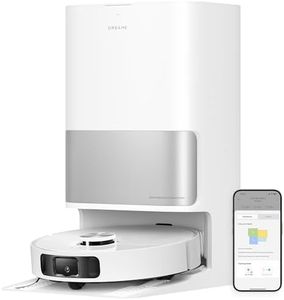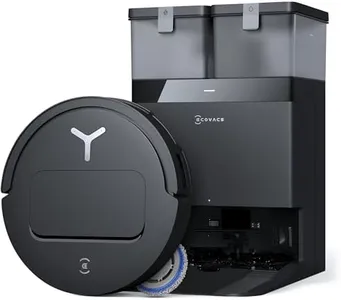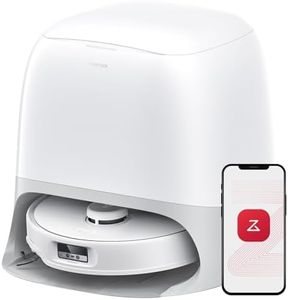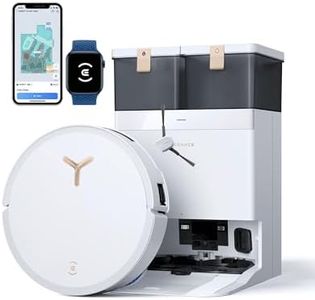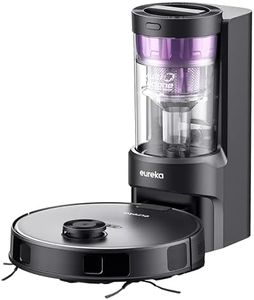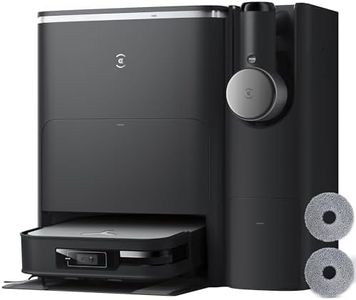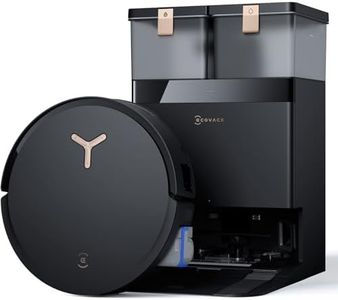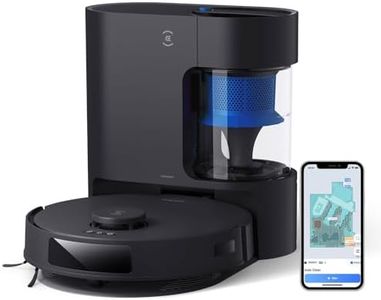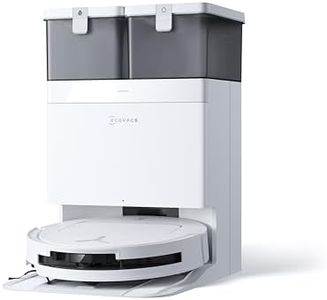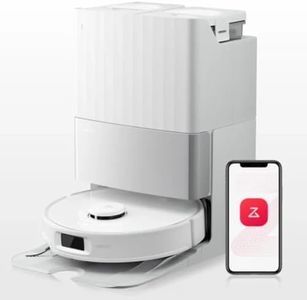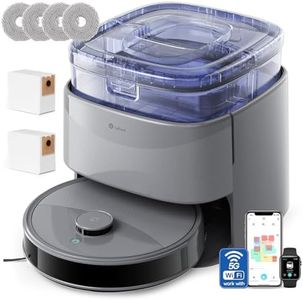We Use CookiesWe use cookies to enhance the security, performance,
functionality and for analytical and promotional activities. By continuing to browse this site you
are agreeing to our privacy policy
10 Best Robot Vacuum And Mop
From leading brands and best sellers available on the web.Buying Guide for the Best Robot Vacuum And Mop
Choosing a robot vacuum and mop can be a game-changer for your home cleaning routine. To pick the best one for your lifestyle, it's important to understand your unique cleaning needs and how different features will help meet those needs. Think about the size of your home, the types of floors you have, whether you have pets or children, and how much maintenance you're comfortable with. A thoughtful approach in comparing the core specifications will help you find a unit that effectively keeps your floors tidy with minimal effort on your part.Suction PowerSuction power determines how well the vacuum can pick up dirt and debris from your floors. Higher suction is especially helpful in homes with carpets, pets, or a lot of foot traffic, as it can remove embedded hair and dust more effectively. Manufacturers often measure this in Pascals (Pa). Light cleaning on hard floors may only need modest suction (under 2000 Pa), while deeper cleans on carpets or in homes with pets may benefit from higher figures (2000–4000+ Pa). If your home is mostly tile or hardwood and you sweep often, you can choose a model with moderate suction. If you want a robot that tackles pet hair or thick carpets, look for higher suction ratings.
Mopping CapabilityThe mopping feature varies significantly across robot models. Some use a simple wet cloth dragged over the floor, while more advanced options have vibrating or spinning pads, and may even automatically control water flow. For basic dust-mopping, a simple wet wipe system is enough, especially on smooth surfaces. For sticky messes or a lot of kitchen traffic, a robot with active scrubbing or adjustable water flow is more effective. Consider your household’s routine—if you have spills or require hygienic cleaning, opt for enhanced mopping mechanisms.
Navigation TechnologyNavigation defines how well the robot can move around your space and avoid obstacles. Simple robots wander randomly or use basic sensors and may miss spots or get stuck, which can suffice for simple room layouts. Advanced models use lasers (LIDAR), cameras, or smart mapping to systematically clean and remember the layout of your home, ensuring thorough coverage. For complex homes with a lot of furniture, consider a robot with mapping and room recognition. For studio apartments or very open layouts, basic navigation is usually sufficient.
Battery Life and Coverage AreaBattery life reflects how long the robot can clean on a single charge, impacting how much floor it can cover without interruption. For apartments or small homes, a lower battery endurance (up to 90 minutes) might be just fine. Larger homes or those with multiple rooms will benefit from robots that run 2–3 hours and can automatically return to charge and resume cleaning. Think about how much space you need cleaned at once to decide on the best fit.
Dustbin and Water Tank SizeThe capacity of the dustbin and the water tank influences how often you'll need to empty or refill the robot during operation. Small bins and tanks (typically under 300ml) require more frequent attention, which could be fine for light daily upkeep or small spaces. If you want a truly hands-off experience or have a larger home, choose larger tanks (400ml+) or models with self-emptying bases or automatic water refills. Match this spec to the time you're willing to spend on robot maintenance.
App Control and Smart FeaturesMany robot vacuums and mops can connect to your home Wi-Fi and be controlled via apps, providing functions such as scheduling, remote start, or monitoring cleaning progress. Some can integrate with smart home assistants. If you enjoy customizing your cleaning sessions or want to control the robot when you're out, look for robust app features. For those who prefer to keep it simple, manual buttons and basic scheduling features may be all you need.
Obstacle Avoidance and Safety FeaturesObstacle avoidance uses sensors to help robots steer clear of furniture, cables, and even pet bowls or socks. Basic bump sensors are sufficient for uncluttered homes, while more advanced robots can recognize and avoid small toys or pet waste using cameras or AI. Households with pets, children, or busy living areas will benefit from smarter obstacle recognition. If your floors are generally free of obstacles, simpler sensors may suffice.
